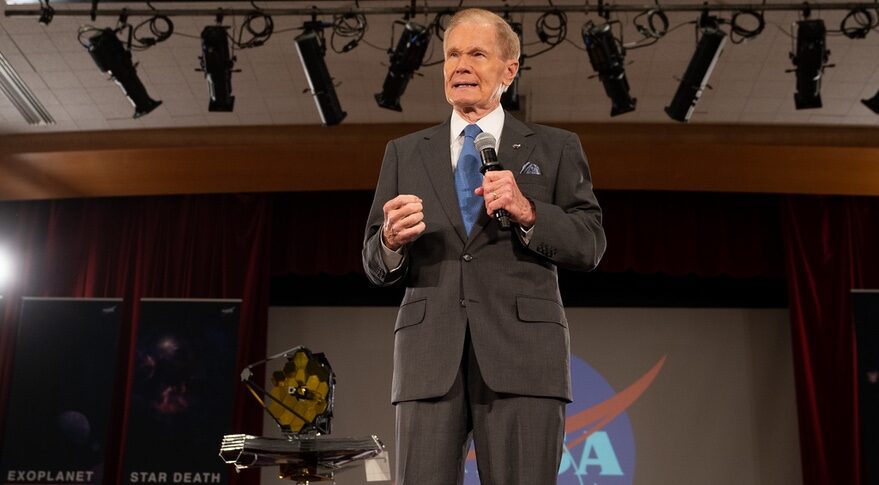
NASA sees JWST success helping win agency support and funding (Image Credit: Space News)

GREENBELT, Md. — The James Webb Space Telescope, once an albatross around the neck of NASA, has become a symbol of the agency’s capabilities and potentially a tool to win support and funding for other programs.
That transformation has become evident with the successful launch and commissioning of the $10 billion space telescope, culminating with the release of initial observations by JWST July 12. The first image, a “deep field” view that captured galaxies from the early universe, was unveiled at a White House event a day earlier.
While the public portion of that White House event ended after only about 10 minutes, a private briefing continued with both President Joe Biden and Vice President Kamala Harris in attendance.
“You should have seen the president and the vice president last night,” said NASA Administrator Bill Nelson in remarks at the Goddard Space Flight Center here July 12. “They asked just a million questions about a lot of things.”
Nelson reiterated than enthusiasm talking with reporters after the Goddard event. “The president says to me last night, ‘Hey, Bill, do you need any money?’ I said, ‘Mr. President, I could use a little help with the Office of Management and Budget in your White House,’” he said. That prompted laughter, he recalled, as an OMB official was in the audience at the White House event.
The White House did offer NASA an 8% increase in its fiscal year 2023 budget proposal, seeking nearly $26 billion for the agency. A bill approved by the House Appropriations Committee June 28 trimmed that increase, instead providing $25.4 billion.
“I’m not worried about the Congress,” Nelson said, citing public support for the agency and programs that include JWST. “So I think the Congress will respond with what we need.”
Several members of Congress attended the JWST event at Goddard, all members of Maryland’s delegation. Among them was Sen. Chris Van Hollen (D-Md.), who serves on the Senate appropriations subcommittee that funds NASA.
In an interview, Van Hollen said senators were still working on topline spending figures for each of the subcommittees. “In the meantime, we’re moving forward in the subcommittees in terms of putting together our proposals,” he said. Regarding NASA’s budget proposal, “we’re going to be pushing very hard to make sure that we fully fund their budget request.”
There was little discussion at the event about the past problems with JWST, including billions of dollars in cost overruns and years of schedule delays that, at times, threatened the program with cancellation. “While there were bumps along the way,” Van Hollen said in public comments at the Goddard event, “once the launch happened, everything had to go perfectly. And it did because of all of you.”
Scientists involved with JWST saw the space telescope as a symbol of not just what the agency is capable of doing but also humanity. “A lot of people sometimes see pictures of space and it makes them feel small. When I see these pictures, they make me feel powerful that a team of people can make this unbelievable instrument to find out things about the universe revealed here,” said Eric Smith, JWST program scientist at NASA Headquarters. “When we want to, we can do that.”
Jane Rigby, JWST operations project scientist at Goddard, said she had a similar perspective, one of “people in a broken world managing to do something right, and see some of the majesty that’s out there.”








